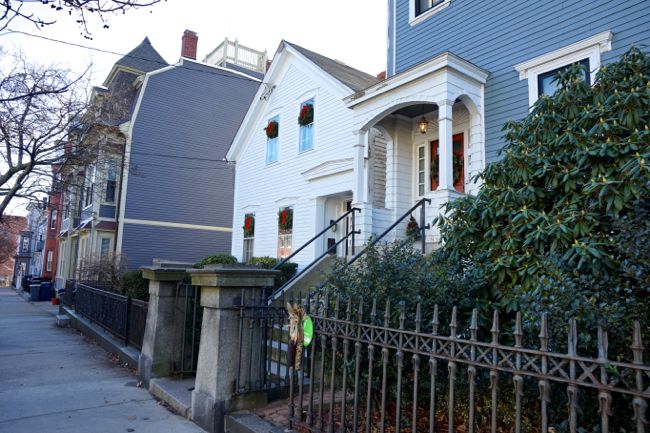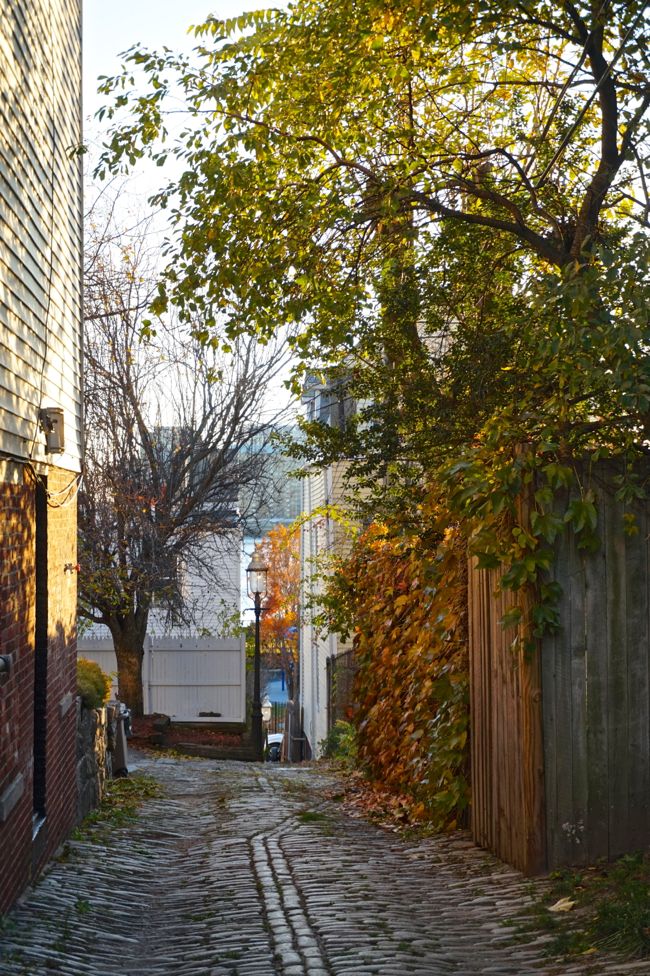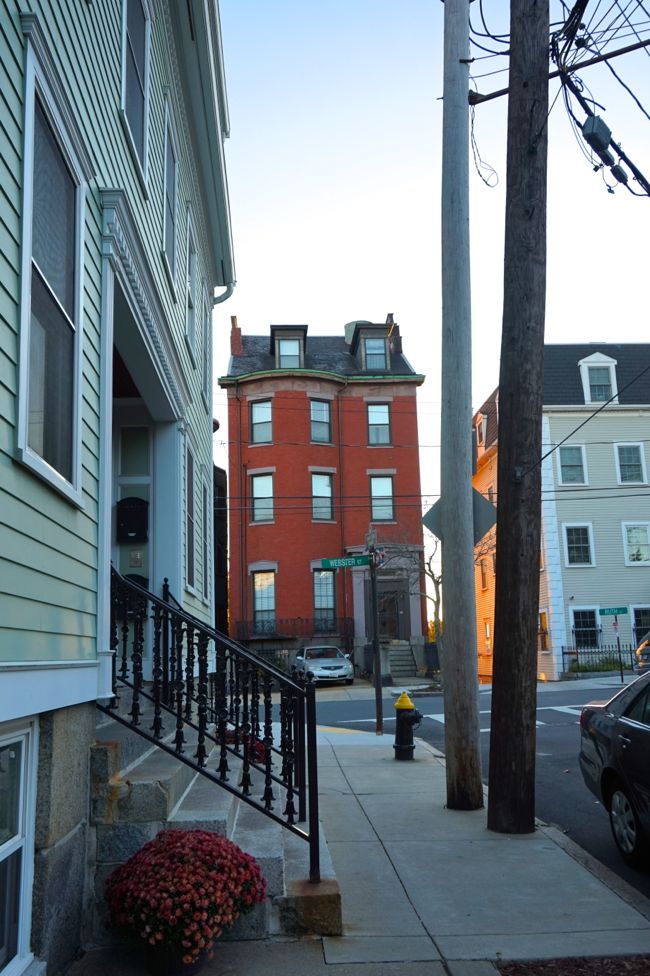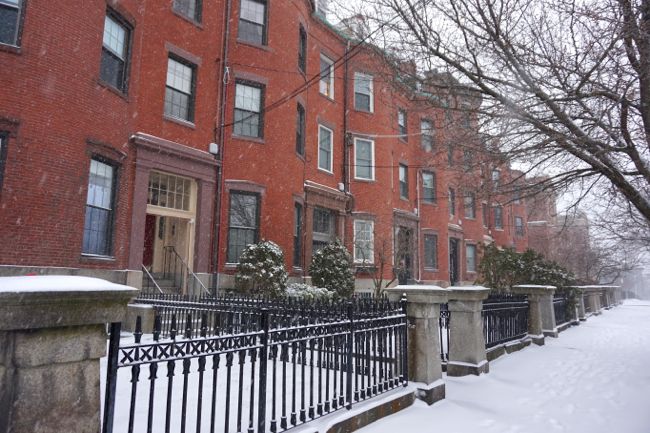When I moved to the Jeffries Point section of East Boston in 2012, I had no idea that it was one of the oldest neighborhoods in Boston. There were a lot of things that appealed to me about Jeffries Point – its proximity to downtown, its harbor views, its beautiful parks and walkable streets – but I mostly overlooked the neighborhood’s historic character.
It was only after moving to the area and settling into an apartment in a 170-year-old building that I became curious about the neighborhood’s history. Talking to my neighbors and reading everything I could find about the area, I gradually learned about the neighborhood’s rich and varied past – as the entry point to America for thousands of immigrants in the early 20th century, as a world-renowned center of the shipbuilding industry in the middle of the 19th century, and as a staging ground for British forces during the second battle of the Revolutionary War, back when the area was pastureland. Looking through old maps and photographs, the seemingly ordinary buildings around me took on new significance as I discovered that many of them had been built well before the Civil War. I started to see evidence of the neighborhood’s 180-year history everywhere I looked. The ornate, cast iron fences surrounding many of my neighbor’s front gardens, the narrow, cobblestone alleyways hidden behind densely-spaced houses, even the towering, old elm tree down the street.
As I gained a new appreciation for my neighborhood’s long history, I began to realize that many of the things I like best about Jeffries Point – the diverse and welcoming community, the proximity to public transit, the tree-lined streets – are directly connected to its historic character. It isn’t just a desirable neighborhood that happens to have a lot of old buildings, it’s a great place to live precisely because it’s a well-preserved, historic neighborhood.
Of course, I’m not the first to realize this. Over the past 50 years, Jeffries Point residents have fought unwanted changes while promoting improvements that benefit the entire community. This long history of community activism began in the late 1960s when nearby Logan Airport planned to expand into the neighborhood, seizing land by eminent domain and demolishing historic buildings to make way for runways and airport support buildings. Residents mobilized against the expansion, winning a series of legal challenges, persuading elected officials, and, when necessary, taking to the streets to block construction. In the end, Jeffries Point was spared, but other East Boston neighborhoods weren’t so lucky.
Today, the stakes might not be quite so high, but Jeffries Point faces a variety of 21st century challenges related to housing affordability, density and (over)development, environmental sustainability, and adapting to a changing climate. I’ve decided to nominate part of the neighborhood for the National Register of Historic Places not only because the neighborhood’s historic significance deserves to be recognized, but also because I believe that advocating for historic preservation is an important strategy for confronting many of these challenges.
The National Register of Historic Places is the Federal Government’s list of places that are most important to America’s history and culture. It’s one of the broadest and most flexible historic designations – it doesn’t restrict homeowners from making changes to their property in any way. This flexibility is important. No one wants to live in a museum, and neighborhoods need the freedom to adapt over time to remain vibrant and relevant. At the same time, historic buildings are an important, irreplaceable part of our heritage. The government recognizes this importance and encourages the preservation of properties listed on the National Register by offering generous tax credits for certified historic rehabilitations of income producing properties. Parks and public buildings listed on the National Register are also eligible for a variety of state and local grants for maintenance and restoration. But perhaps most importantly, listing a neighborhood on the National Register represents a prestigious recognition of the area’s historic value. And official recognition of the historic value of Jeffries Point is long overdue.
Ask someone to think of a historic Boston neighborhood and they’ll probably imagine the Federal style townhouses of Beacon Hill, or Back Bay’s Victorian mansions. Like me when I first moved to the neighborhood, many people are completely unaware of the historic significance of Jeffries Point, even though much of the area’s architecture was built decades earlier than those Back Bay mansions. Because Jeffries Point is separated from downtown Boston by the harbor, many Bostonians only ever pass through the neighborhood on their way to the airport. I know people who have lived their entire lives in the Boston area and have never heard of Jeffries Point. I hope that by nominating part of the neighborhood for the National Register, I can help draw attention to the importance of Jeffries Point’s history and architectural heritage.
Recognizing the value of Jeffries Point’s historic character has become critically important over the past few years. For much of the 20th century, Jeffries Point was a predominantly working-class neighborhood. It was a welcoming and affordable place to live for immigrants and other newcomers to the city. Even today, it’s one of Boston’s more economically and culturally diverse neighborhoods. But in recent years, property values have begun to rise dramatically. Developers and real estate speculators are buying up property, gut-renovating and demolishing existing buildings, and constructing new, luxury housing on open lots. Some longtime residents – and even some recent arrivals – have suddenly found that they can no longer afford to live in the neighborhood. “This was the neighborhood that no one wanted” one longtime resident told me, “but now everybody wants in.” Jeffries Point is in the middle of the biggest building boom the neighborhood has experienced in over a century. Decisions made today will define the neighborhood’s character and community for decades to come.
In the face of all this change, Jeffries Point’s historic buildings, parks, and streets provide a measure of stability. They tie us to the past and provide a sense of continuity. They give the neighborhood a unique sense of place, and an atmosphere of dignity and beauty that only comes with age. But even more importantly, the neighborhood’s historic architecture is a crucial part of its future. Working to preserve the neighborhood’s dense, historic housing stock, rather than replacing it with often less dense and less affordable luxury developments, is one way to help retain our diverse community in the face of increasingly unaffordable housing options. And when we consider that it can take decades for even the most energy efficient new buildings to make up for the carbon emissions associated with demolishing an older building and constructing a new one, it becomes clear that preserving our historic and older buildings is a critical strategy for reducing carbon emissions and fighting climate change. With all of this in mind, recognizing the historic significance of Jeffries Point by nominating a portion of the neighborhood for the National Register is, I think, the right thing to do.
I’m excited to dig into the research required for the nomination, and I’m hoping to gain a deeper understanding of my neighborhood’s past in the process. But the end product, the National Register nomination form itself, is a pretty dry document – long, boring, and filled with a lot of architecture jargon. When I eventually complete the form, I don’t expect many people will read it. At the same time, I’d like to share what I learn with my neighbors and others outside the neighborhood. So I’ve decided to share regular updates on my progress here, along with interesting stories about the neighborhood’s past and how that past remains relevant today. I hope you’ll follow along!






As a grad student in Historic Preservation, I cannot applaud you enough for this decision. I wish you the best of luck in all your research and the dreaded paperwork. Filling out nomination forms was one of my least favorite things, lol. But I surprisingly enjoy reading them. There is actually a listed house in my town (my dream house, oh how I would love to win the lottery and buy the empty building to make it truly shine) and I have its nomination form saved on my computer just to browse through sometimes. I would love for you to share your final nomination forms here for people like me to read when you’re finished.
I really do want to thank you for making such an effort for your neighborhood and your own building; it’s been so fascinating to follow along all your work!
Thanks Krystal! I’ve just started filling out an inventory form for the neighborhood, and it’s a bit of a slog. But I actually agree with you – I really like reading through inventory and NR nomination forms for buildings and neighborhoods around Boston. And I’ll definitely share the completed forms for my neighborhood here.
Also, if you’re ever interested in reading about other historic sites in Massachusetts, the Mass. Historical Commission has a public online database of all of the state’s inventory and nomination forms called MACRIS.
You should contact Mary Ellen Welch. She is an original airport expansion activist, retired schoolteacher, fair housing advocate, and has deep, long-standing roots in Jeffries Point.
Yes, I’ve heard a lot about her, and I’d love to meet her.
I’m a former small-city landmarks commissioner, and I’m so glad you are making this effort! Jeffries Point is a beautiful neighborhood and certainly worth preserving. I look forward to reading posts about your research and the nomination process. Putting your neighborhood on the National Register would be a wonderful legacy! We are west-coasters, but we have family in New England and we fly in and out of Boston. The next time we’re there, we’ll check out Jefferies Point!
You should! Jeffries Point is right next to the airport, an easy five minute cab ride away, or if you’re feeling adventurous, a quick 5-10 minute walk from Terminal A. If you have some time to kill before or after a flight, it’s a great place for a walk with beautiful views of the harbor and the downtown skyline from the harbor walk and Piers Park.
Does anyone know exactly where all the historic gas lamps are located in East Boston, many I believe are tucked away in alleyways off streets. It would be nice if someone from Eastie can come up or piece together a Glossy large book with large photos of all the forgotten historic looking roads, streets, alleyways and buildings that East Boston still has.
Great idea. How cool is it that we still have a bunch of fully functional gas lamps in Eastie? I only recently discovered that most of these gas lamps are still burning gas! I had always assumed they were electrified until I took a closer look. I’ve seen a handful of these gas lamps in Jeffries Point, and as you said, they’re all tucked away on alleyways forgotten to time. There are even a few gas lamps on old alleys that have since been closed off, essentially leaving a still-functional gas lamp in someone’s backyard. I assume there are others scattered around Eagle Hill and other parts of Eastie. Maybe I’ll do some exploring and write a post about it.
There is a 1920s or 30s nostalgic looking electric light pole right outside of Santarpio’s on Chelsea street but the rest of the street lights throughout Chelsea street are modern , I wonder why the city saved it and why.
What’s the story behind it…
Good luck! I hope you are successful. As a graduate student studying urban planning I know the importance of historic preservation and the many challenges neighborhoods face, including gentrification. I’ll certainly be following your progress with interest!
Do you ever have meeting ger-togethers planned for neighbors and those who have interest or knowledge about Jeffries Point?
There’s nothing official organized right now. I’ve just been talking informally to some of my neighbors and the folks in the Jeffries Point Neighborhood Association, which meets once a month. But at some point, I’d like to put together some events to celebrate the area’s history, maybe a walking tour.
Thank you for sharing your Part 1 & 2 on the development of Jeffries Point. I would be interested to see you bring the series into the present moment. My immediate interest is trying to map out how Logan’s grew and expanded, not only landwise via fill and acquisition but also footprint wise – where the original terminals were, so forth. Any suggestion for resources I could avail myself?
Best! MW